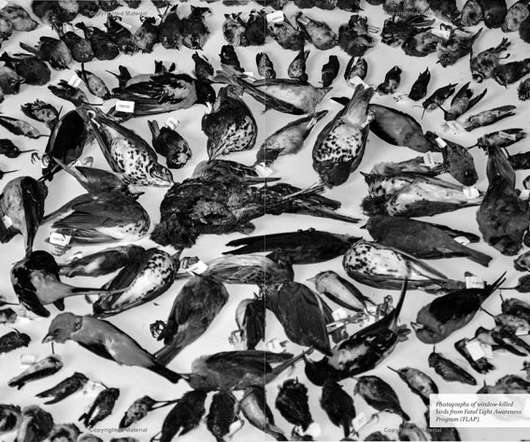Solid Air: Invisible Killer Saving Billions of Birds From Windows–A Book Review
10,000 Birds
JULY 5, 2022
And buildings without thought for birdlife, significant buildings like the Minnesota Vikings shiny “death trap” for birds, are still being built.** Dead birds are a part of the life of a birder, a feeder of birds, and of bird science. Dr. Daniel Klem, Jr., And I don’t think that will be many people.












Let's personalize your content